Top 20 attractions in Nepal
1. Pashupatinath Temple
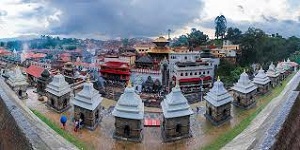
The Pashupatinath Temple is one of the UNESCO World Heritage Sites, dedicated to lord Shiva and located on the banks of the Bagmati River which is 5 km north-east of Kathmandu. The temple was built by Licchavi King Prachanda Dev in the 5th century. The temple is built in pagoda style. The temple has a gilded roof, four sides covered in silver, and exquisite wood carvings. One of the most astonishing decorations of the temple is the huge golden statue of Nandi – Shiva’s bull.
2. Manokamna Devi Temple
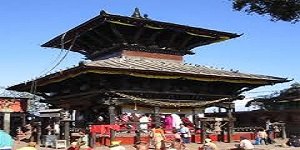
The Manakamana Temple is built in Pagoda Style dedicated to Goddess Bhagwati. It is situated in the Gorkha district, Nepal, 140 kilometers from Kathmandu. It is built in 19th century by Lakhan Thapa. It is built as set in a square, which is overlooked sacred magnolia tree. The name Manakamana is derived from two words, Mana, meaning heart and Kamana, meaning wish. It is believed that the Goddess Bhagwati rewards those who make the pilgrimage to her shrine by granting their wishes, and she is especially popular with Newari newlyweds who pray for sons. For reaching in temple, there is cable car service is available from kurintar. Cable Car is inaugurated by Crown Prince Dipendra Bir Bikram Shah Dev on 24th Nov, 1998. The cable car rides over the distance of 2.8 kilometers in 10 minutes more or less, it was imported from Austria and hundred percent safety. The cable car can handle up to 600 persons per hour and the number of passengers per carrier is 6.
3. Sarangkot
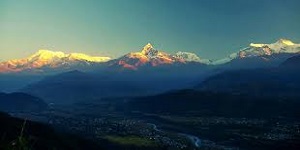
Sarangkot is the small hilltop which is famous for view of sunrise over Annapurna Mountain. It is only 5 km from Lake Side from Pokhara and highest view point at 1592m high for Sunrise and Sunset view over the snowy peaks. It can be reached easily by 45 minutes by a car ride to the top from Pokhara and then 45 minutes hike up to the main view point. From here, you can see a panoramic sweep of Himalayan peaks, from Dhaulagiri (8167m) in the west to the perfect pyramid that is Machhapuchhare (6997m) and the rounded peak of Annapurna II (7937m) in the east. Most people come here at dawn or dusk, when the sun picks out the peaks in brilliant colours.
4. Pokhara Valley
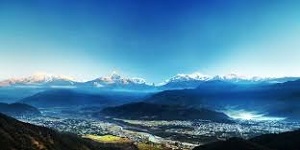
Pokhara Valley is the second-largest valley in the Nepal. It is situated in the western part of the Nepal and located in the Gandaki zone, 203 kilometres west of Kathmandu Valley. From Pokhara Valley can see the Himalayan range and beautiful lakes.
5. Bindabasini Temple
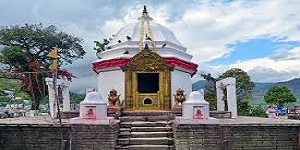
Bindabasini Temple is built in the white pagoda-style dedicated to Goddess Bhagwati. It is situated in Mohariya tole of Pokhara near Bhimsen tole bazar. It was built by Kaskeli King Siddhi Narayana Shah in 1842 B S. The whole area of this temple compound is covered by 47 ropanis lands affords a beautiful view of the Pokhara city and surrounding places.
6. Gupteshwar Cave
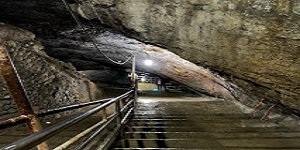
Gupteshwar Cave is the longest cave (2950) of Nepal. It is discovered in the 16th century. It is nearby Davis Fall and the water of Davis Fall passes through this cave. It is located 15 minutes walking distance from the Kusma city and 55 kilometres from the Pokhara city. The attraction of this cave is one of the biggest Shiva Linga where devotees pay homage to Lord Shiva.
7. Davis Fall
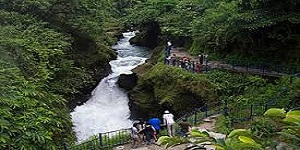
Davis Falls is an amazing waterfall located 2 km from Pokhara. It is a natural underground waterfall which plunged into the underground 100 ft deep from the ground and runs for 150 m long within the underground. The source of this waterfall is Phewa Lake Dam. This lake is called Patale Chango in Nepali which means Underworld Waterfall. Because of its unique feature, many people visit this amazing waterfall. The underground waterfall can be seen from Gupteshor Cave.
8. Phewa Lake
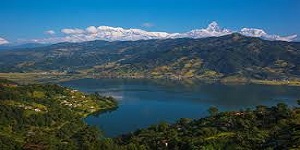
Phewa Lake is the second largest lake in Nepal, located in the south of the Pokhara Valley. It is also called a semi-natural freshwater lake. The lake is also famous for the reflection of mount Machhapuchhre and other mountain peaks of the Annapurna and Dhaulagiri ranges on its surface. Visitor can hire a colourful boat which is called doonga for boating in the lake. The Tal Barahi Temple is situated on an island in the lake.
9. Talbarahi Temple
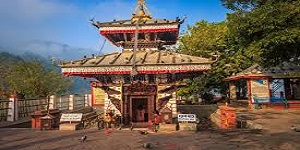
Tal Barahi Temple is also known as Lake Temple or Varahi Temple located on a small island on Phewa Lake in Pokhara. It is a two-storey pagoda temple Dedicated to Goddess Varahi, who is an incarnation of Goddess Durga, both Hindu and Buddhist followers visit here for worship. It was built by King Kulmandhan Shah. As the Temple is on a small island in Fewa Lake, the only way to visit it is by boat.
10. Kathmandu Valley
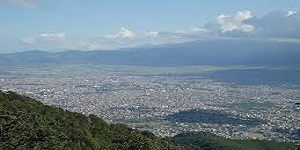
The Kathmandu Valley is comprised of three historic cities – Kathmandu, Patan, and Bhaktapur, which were once independent states ruled by Malla kings, who ruled the cities from the 12th to the 18th centuries. It is also known as Nepa Valley. There are seven World Heritage Sites within the valley. It is the most developed and populated place in Nepal. The majority of offices and headquarters are located in the valley, making it the economic hub of Nepal. It is popular for its unique architecture and rich culture.
11. Swayambhunath Temple
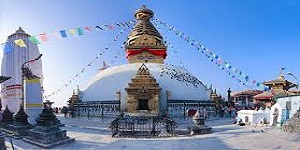
Swayambhunath Temple is religious sites and located 3 km from Kathmandu. It is also known as Monkey temple. It is one of the holiest Buddhist religious sites of Nepal. It was founded by King Mānadeva at 464-505 CE. The stupa consists of a dome at the base, above which is a cubical structure painted with eyes of Buddha looking in all four directions. There are pentagonal toran present above each of the four sides with statues engraved in them.
12. Boudhinath Stupa
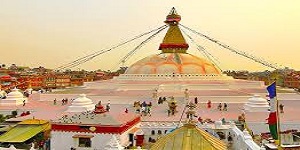
The Boudha Stupa is a UNESCO World Heritage Site. It is one of the largest stupas in the world, located 11 km from Kathmandu. It was built right after the demise of Lord Buddha during the 5th century AD in the reign of King Manadev (464-505) AD. Boudhanath also called as Boudha in local accent. Buddha (earth, air, water, fire and space) are comprised in the Stupas architecture. It is believed that thousands of Buddhas incarnated as Lamas in Boudha stupa and the rays of Bodhisattva entered stupa in the form of song from
13. Patan Durbar Square
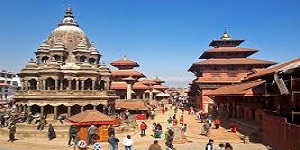
Patan Durbar Square is a UNESCO World Heritage Site. It is situated at Lalitpur. It was built in Mala Kingdom. The main major attraction of this site is the old royal palace and a host of artistically designed temples all within the square. It is one of the oldest Buddhist Cities.
14. Krishna Temple
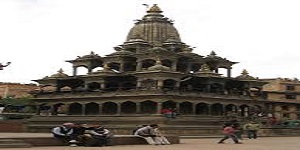
Krishna temple is situated in Patan Durbar Square. The temple was built by King Siddhi Narsingh Malla in 1667. It was built in the Shikhara style called Granthakuta[9]. The stone carvings along the beam above the first and second-floor pillar are most notable. The first-floor pillar carvings narrate the events of the Mahabharata, while on the second floor there are visual carvings from Ramayana.
15. Golden Temple
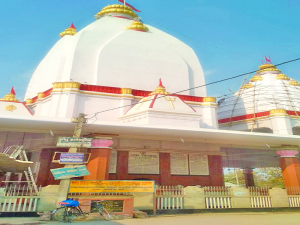
The Golden Temple is UNESCO World Heritage Site as part of the Kathmandu Valley and Patan Durbar Square complexes.It is built in three storey golden pagoda which is built by king Bhaskar Varman in twelfth century. Inside the upper storey of the pagoda is the golden image and a large prayer wheel. It is famous for feeding rats.
16. Patan Museum
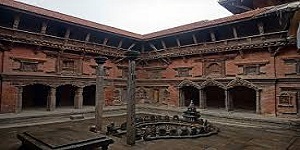
Patan Museum is UNESCO World Heritage Site, located in Patan.The Patan Museum was inaugurated in 1997 by Late King Birendra Bir Bikram Shah. The Patan Museum displays the traditional sacred arts of Nepal in an illustrious architectural setting. Its home is an old residential court of Patan Durbar, one of the royal palaces of former Malla Kings of the Kathmandu Valley. The Museum’s exhibits cover a long span of Nepal’s cultural history and some rare objects are among its treasures. Most of the objects are cast bronzes (sculptures of Hindu and Buddhist deities)[6] and gilt copper work, traditional crafts for which Patan is famous.
17. Lumbini Garden
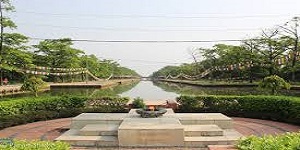
The Lumbini Garden is UNESCO World Heritage Site and the Buddha’s birthplace. The site was described by the Chinese pilgrim Fa Xian in 630 CE. In Sanskrit, Lumbini means ‘the lovely’. It was the family home of his mother, Mayadevi, and she returned here from Kapilavastu (25 km east of Lumbini) to give birth to Siddhartha Gautama, later the Buddha (‘Enlightened One’). Here is the bathing tank of the Sakyas, the water of which is bright and clear as a mirror, and the surface covered with a mixture of flowers. Ashoka Pillar nearby also refer to the spot as his birthplace. It is said that the newly born Prince Siddhartha (later became the Buddha) took his first seven steps and delivered his peace message to humanity here.
18. Mayadevi Temple
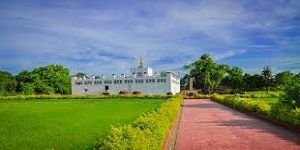
Maya Devi Temple is UNESCO World Heritage Site and an ancient Buddhist temple of Lumbini, Nepal. It is the main temple at Lumbini, where a traditionally considered the birthplace of Gautama Buddha. The temple stands adjacent to a sacred pool known as Puskarni and a sacred garden. The temple brick buildings constructed by King Ashoka in third-century BCE.
19. Chitwan National Park
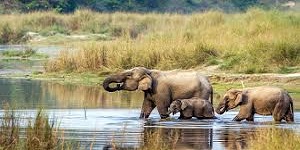
Chitwan National Park is a world heritage site and first national park in Nepal. It was established in 1973. It is a rich natural area in the Terai, the subtropical southern part of Nepal. A total of 68 species of mammals, 544 species of birds, 56 species of herpetofauna and 126 species of fish have been recorded in the park. The park is especially renowned for its protection of One Horned Rhinoceros, Royal Bengal Tiger and Gharial Crocodile. Chitwan National Park is the closest and the ideal place to go for wildlife safari.

